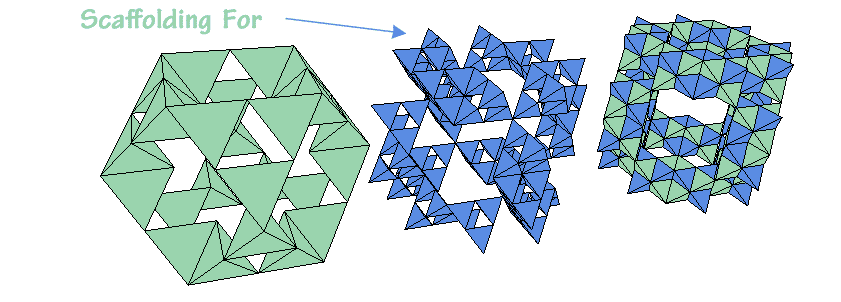
The first image represents the sequence of adding smaller, face centered tetrahedrons of differing colors. With smaller vertices to larger midpoints: The color differences represent tetrahedron size differences.

The second image has the scafolding, (larger tetrahedron) shrunk... Many perspective-angles (or focal lengths) are provided to explore the seeming changes of geometry. Yet the geometry remains constant.
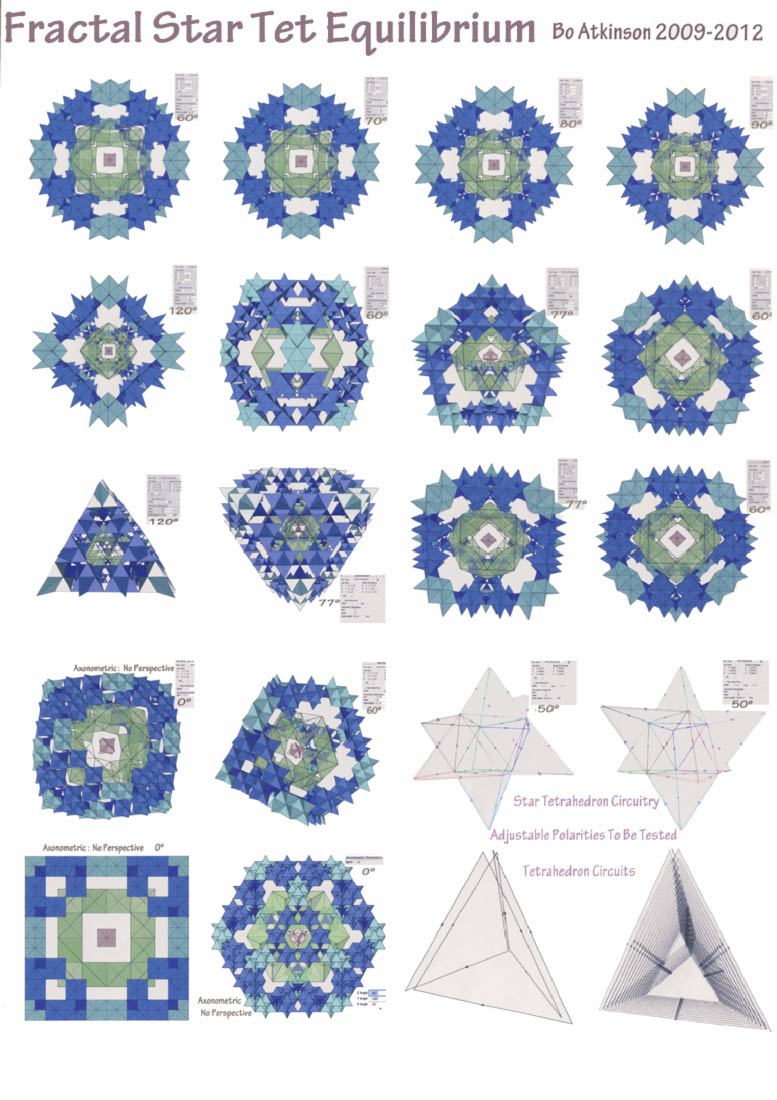
Fractal Star Tetrahedron Equilibrium circuit assemblies are to be added with time. Geometric modeling proceedures are presented to explore and demonstrate natural 3d layouts. Ultimately, the intent is to wire-build, in real life, fractal-coil circuits. To experiment with these fractal circuits-- To test effects as resonators or radiators of electromagnetic energy.
Next is an example of circuiting one tetrahedron with multiple turns. THese multiple turns are an example of increasing the induction of each coil.
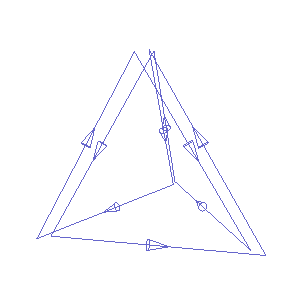
My prefered building plan is to use a "wire welder" which will integrate arrays of tetrahedron modules, as pictured above. The fact is that the tetrahedron above is pictured as a "closed circuit". Such a closed circuit can be cut at midpopints to allow "welding" in smaller face centered tetrahedrons of the same type. In this way incorporate all tetrahedron circuits into one circuit. However further experiments could subdivide the star circuits into smaller circuits. A single star tetrahedron (stick form), imagined with, focussed dipole sets:
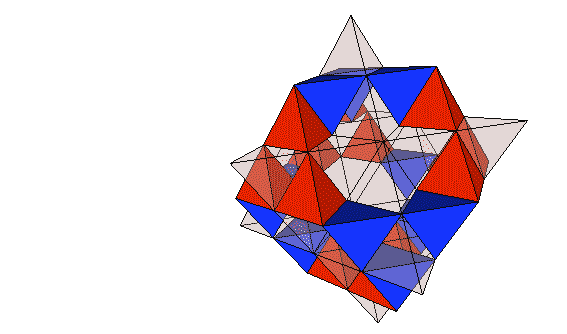
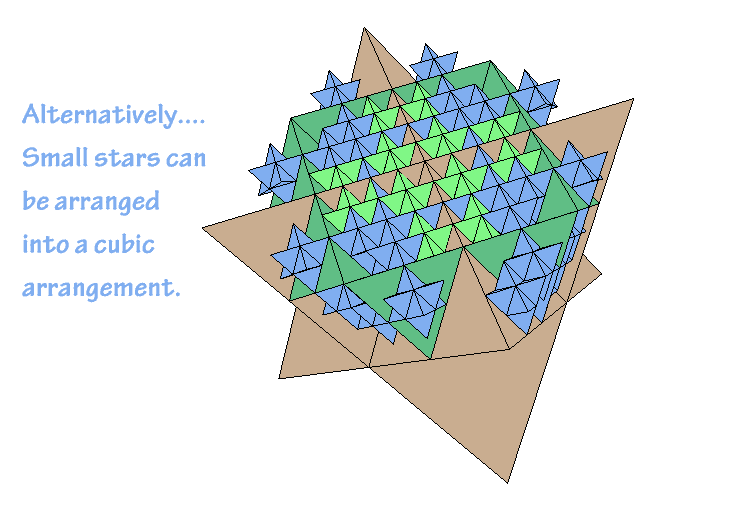
I learned about the vector equilibrium from the book "synergetics" by Buckminster Fuller. Recently i noticed that star tetrahedrons and the vector equilibrium had a much earlier publishing by Leonardo Davinci. Quote from eternal link:
My own interest is in exploring the possibilities for electrification and magnetization of startetrahedron arrangements.
My earliest tetrahedron modeling with a Synergetics forum online.
My earliest work with 3d modeling software.
My exploration of electric and magnetic field relationships, through geometry.
My experiments with feeble currents and coil geometries.
"Vortex-Flame-Amplifier"
"Spinductor"
"Morphing-Sphere Spiral"
"Reflex Flame Amplifier"
"Spherical Reflex Coil"
"Plasma Resonator"
"Reflex Vortex Amplifier"
"Multi Axial Coils"